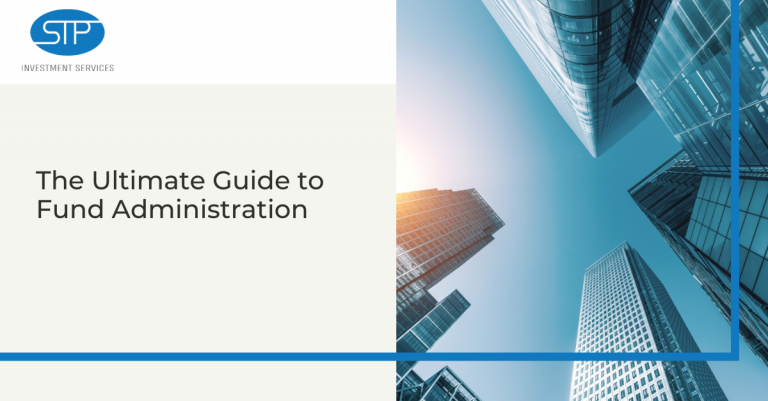How to Start A Hedge Fund: The Ultimate Guide to Fund Administration

As an investment manager looking to start a hedge fund or private equity fund, you have a lot to think about. Just like any start-up, you’ll be dealing with a host of moving parts, from hiring the right team, selecting the right service providers, creating a strategy to raise capital to putting a marketing plan in place.
But starting a hedge fund or private equity fund also comes with its own unique set of challenges. Along with the importance of establishing your unique investment story, there are critical legal and regulatory requirements to consider, as well as fee structure and liquidity considerations.
We built this guide to help investment managers understand where to begin and what to keep in mind as they begin the process of creating their own private equity or hedge fund.
What You Need to Start a Hedge Fund or Private Equity Fund
Capital
As a fund manager, one of the most important things you’ll do is raise capital. And we’ll get to that process in detail soon, but Capital is listed first in our What You Need to Start a Fund section because we can’t underemphasize its importance—or the challenge it may present.
Depending on who your target investors are–large institutions, high-net-worth individuals, or smaller family offices–you will need to set capital minimums. For example, to successfully launch an institutional-quality hedge fund or private equity fund, you need a minimum of $100 million to catch investors’ attention. But your focus should be on how you can create economies of scale as quickly as possible.
Your capital does a lot of work for your fund:
- Enables you to hire and pay a strong team
- Allows you to select best in class service providers and cover business expenses
- Allows you to reinvest and grow
Legal Structure
As a fund manager, you open yourself and your business up to a host of regulatory obligations, tax considerations, operational issues, investor reporting requirements and substantial personal liability. Therefore, determining your fund’s legal structure is one of the most critical decisions you’ll make in the early stages of starting your fund. Your fund structure depends on several considerations, including tax and financial particulars, as well as liquidity characteristics, which we’ll touch on in a moment. You should work closely with a fund attorney as you’re establishing your legal structure.
Domicle of Fund(s)
If you anticipate exclusively U.S. investors, you can safely structure your hedge fund as a domestic-only fund, in either a limited partnership or LLC capacity. Off-shore funds are accessible–without U.S. tax liability–to U.S. investors and off-shore investors. If you set up your fund as an off-shore entity, you’ll need to determine your off-shore jurisdiction. However, each jurisdiction has its own set of pros and cons, so selecting the right domicle will require careful attention to the details.
Open or Closed-End Fund
Most hedge funds are open-end funds, which means they invest primarily in liquid assets and allow investors to contribute or redeem funds periodically. Meanwhile, private equity funds are typically closed-ended funds, which means the investment period is only intended to last for a fixed amount of time, typically between five and 10 years. During this period, investors generally make an initial commitment of capital and are not permitted to make withdrawals.
While many of the processes involved in launching a hedge fund or private equity fund are the same, determining the investment strategy you want to pursue will help you decide which type of fund you wish to manage.
Additionally, unlike most investment companies and mutual funds, which are registered with the SEC and regulated by the Investment Company Act, hedge funds and private equity funds can be excluded from such regulation under one of two exemptions:
3(c)(1)
3(c)(1) funds are limited to 100 accredited investors, which is defined as someone having:
- At least $1 million net worth
- $200,000 annual income ($300,000 including spousal income)
Entities or trusts must have at least $5 million net worth.
3(c)(7)
3(c)(7) funds must be owned by qualified purchasers, defined as someone having at least $5 million in net investments. To be considered qualified purchasers, entities or trusts need at least $25 million in net investments. The number of investors in a 3(c)(7) fund should not exceed 2,000 to avoid being recognized by the SEC as a publicly traded partnership.
Fee Structure
Establishing your fee structure is also an important early decision. Your fund fees should cover expenses and provide the proper amount of upside for good performance. Traditionally, hedge and private equity fund managers have stuck to a “2 and 20” model—meaning a 2% management fee and a 20% performance fee or carry. But recently, fund managers have been under pressure to reduce those fees. Ultimately, your fee structure is up to you; but analyzing the performance risk you’re willing to take, your strategy, and your anticipated total assets under management will help you stay competitive with your peer group and determine how to set your fee structure.
Liquidity Characteristics
In addition to fee structure, investors interested in your fund will certainly want to understand its liquidity characteristics, or the ease with which an investor can access invested capital. Your fund’s liquidity will depend on the focus of your investment strategies.
- Funds that invest primarily in liquid markets should offer more relaxed withdrawal terms that give investors greater opportunity for liquidity based on your ability to quickly fund redemptions when necessary.
- Funds that invest in more illiquid assets, or that require more time to monetize assets, are better suited to establish stricter requirements around lock ups.
Marketing Strategy
To attract investors, you’ll need a solid marketing strategy—one that understands both what investors are looking for and the value of your unique fund. However, marketing hedge and private equity funds can present some unique challenges. First, as unregistered investment vehicles, they can only be marketed to a small audience of accredited or qualified investors, limiting the potential audience to market to.
Know Your Client (KYC) and Anti Money Laundering (AML) rules add an additional layer of checks as well. Ensuring your investor base is free of bad actors is required before entering into any financial relationships.
Even with this unique set of marketing hurdles, your hedge fund or private equity fund is a new offering in a sea of funds that all look similar. Without an organized marketing plan, potential investors may never even hear about you, much less begin to understand why they should consider investing with you.
Four Steps to Starting a Hedge Fund or Private Equity Fund
Step One: Set Up Your Core Team
You can’t start a successful hedge fund or private equity fund alone, no matter how much capital you have. Remember, your fund is a business, and even start-ups require certain roles to be fulfilled: CEO, CTO, CFO, COO, CCO administration, and more.
Ideally, you’re already part of a solid team at an established firm, and that team is already on board with your idea. That will make the hiring process far more streamlined because you won’t have to vet team members for buy in or cultural fit.
Depending on what you choose to outsource, which we’ll cover momentarily, you should expect to hire, at the bare minimum:
- An investment team
- Chief Operations Officer (COO) who can wear multiple hats until scale is reached.
- An administrative assistant or office manager
You’ll also need to find a place to work or invest in remote technology that empowers seamless communication between your team members.
Step Two: Define Your Investment Strategy
Your investment strategy is your fund’s foundation. It’s what you’ll use to pitch potential investors in our next step (raising capital), so it needs to be solid enough to build your entire business upon.
Your investment strategy should include:
- Your unique selling point—what sets your fund apart?
- Trading techniques to maximize returns
- Expected returns
- Market analysis
In a lot of ways, your investment strategy is just like a business plan. Don’t be afraid to include weaknesses and strengths in it as well; it will help you understand what you need to work on, and what characteristics to highlight in pitch meetings.
Once your investment strategy is outlined, you will have a better idea of what front, middle, and back office services you need to manage or outsource:
- Front office services include trading, analyst functions, managing trading systems, and fund sales.
- Middle office services will include risk management, trade settlement, counterparty reconciliations, collateral management, and treasury support.
- Back office functions include record keeping, fund accounting, investor services, audit support, regulatory support, financial reporting, and other supportive services.
We’ll cover how to determine your outsourcing needs later on in this article.
Step Three: Raise Capital
Simultaneously the most important and most challenging task ahead of you is raising sufficient capital to launch and operate your hedge fund.
Whether you’re an emerging fund manager or you have an established track record with illustratable results, there are a few things to keep in mind when you begin raising capital.
- Culture & trust matter. Just like with any business deal, investors want to work with people they like and are credible. Your process and strategy are critical to your success, but so is likeability. Investors need to buy into your character as much as they do your investment story.
- Make sure your investment process and strategy are rock solid. That means telling a specific story in such a way that your investors can understand exactly where opportunities exist and developing a repeatable process independent of policies or regulations that could change.
- Choose partners and providers wisely. Investors want to know that the people behind your fund are legitimate, well-established professionals with no conflicts of interest, who will make sure all required checks and balances are in place.
You’ll also want to consider who your target investors are: large institutional investors, or high-net-worth individuals and smaller family offices.
Benefits of Large Institutional Investors
- Source more capital from a single place
- Intense pitch process requires you to fully refine your story and strategy
- Scale business quickly
Drawbacks of Large Institutional Investors
- Generally, a longer diligence process
- Likelihood of pitching multiple times to different stakeholders
- Fee pressure
Benefits of Smaller Investor Segments
- Faster approval process, flexibility of fee structure
- Easier to work with as you’re first starting out
Drawbacks of Smaller Investor Segments
- Need a much higher number of investors to reach capital targets
- Harder to scale business quickly
Investing your own net worth into your fund is a good indicator to both institutional investors and smaller individuals or family offices that you have confidence in the ability of your strategies to succeed.
Step Four: Evaluate Your Outsourcing Needs & Choose Your Service Providers
As a new fund manager, you’ll want to keep expenses low and streamline efficiency wherever possible, as long as doing so doesn’t affect the quality of your fund’s performance.
Partnering with an expert outsourced provider can be a cost-effective way to handle fund services obligations, such as shadow accounting and trade capture and processing, while allowing you to focus on your core competencies.
Fund Administration: A trusted independent fund administrator can help you maintain accurate books and records, calculate regular NAVs, allocate expenses, and prepare financial statements.
Investor Services: An outsourced fund administrator can also play a major role in helping you navigate KYC & AML, manage subscriptions, redemptions and transfer activity, handle investor reporting and share register of investors.
Middle & Back Office Services: Additionally, outsourcing trade capture and processing, security and data enrichment, fund performance and attribution, creation of fund factsheets and management of consultant databases can keep your hedge fund operating smoothly and efficiently.
It takes a village to keep your hedge fund or private equity fund operating smoothly—and you’ll want it to be a carefully curated, expert village, including lawyers, auditors, accountants, office support, compliance officers, an IT team, and a third-party fund administrator.
You can hire these providers full time if your budget permits, but in the beginning, it’s likely you’ll be using them on an ad-hoc basis.
Either way, it’s critical not to skimp on the quality of these professionals. Not only will potential investors use them as a basis by which to judge your firm, but a single legal or compliance misstep could bring your fund to the ground—so choose wisely.




